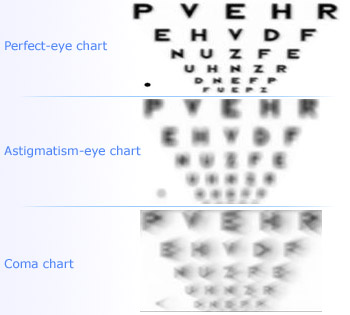
Astigmatism and coma are other types of defects. If an object is placed away from the axis of a lens, then a point object gives rise to an image that is not point–like but is a smeared-out line. This is called a coma. Selecting with the help of a diaphragm, a narrow pencil of rays passing through the centre of the lens can minimize this defect.
Sometimes rays passing through a lens along two mutually perpendicular directions are brought to focus at two different points. Hence, instead of obtaining an image at a certain distance from the lens, one obtains slightly diffused and distorted images over a small range of distance from the lens. This is known as astigmatism. For an appropriate combination of lenses, the defect can be negligibly small.
Sometimes, the image of a plane object is not a plane. Although the object is a plane, the image is formed on a curved surface. This distortion is called curvature of the field and can be eliminated by using a proper combination of lenses.
Geometric distortion is also a common aberration. For an extended object, the magnification for parts at different distances from the axis is usually different. This gives rise to an image that is systematically distorted. Sometimes, the diagonals of the object are magnified less giving a barrel–like look to the image. On the other hand, sometimes the diagonals are excessively magnified giving the image a pincushion‐like look. Using two lenses and using a diaphragm between them can eliminate the distortion.
